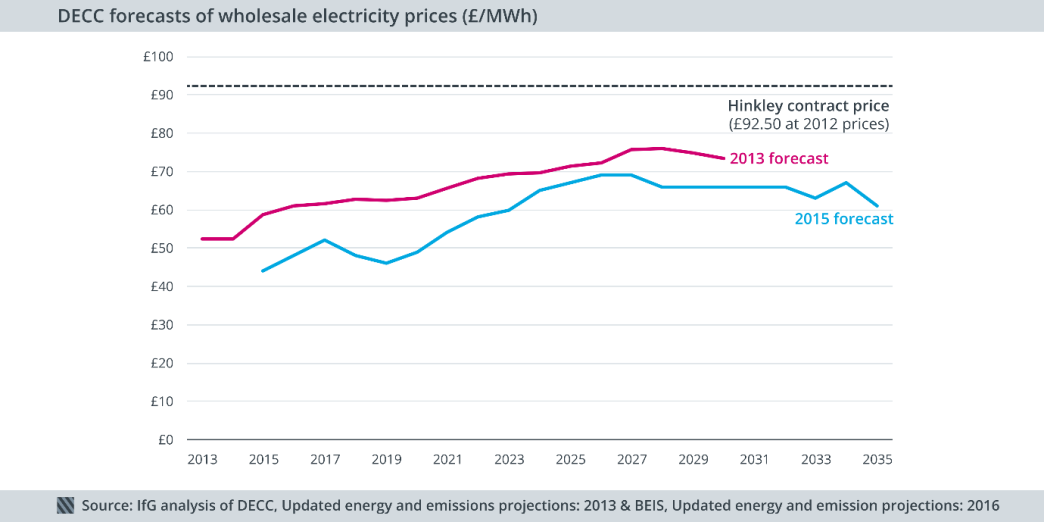The National Audit Office today published a report on Hinkley Point C. Tess Kidney Bishop says the report raises major concerns about government decision making and identifies three lessons for future infrastructure projects.
Lesson one: A strategy must include realistic plans for delivering it
The National Audit Office (NAO) concludes that the Hinkley decision was made on the back of a strategic case, despite a weak economic case: “as the value-for-money case weakened, the Government put more weight on the wider, unquantified strategic benefits of proceeding with the deal”. This alone is not a problem. Cost-benefit analysis, which is central to the economic case, cannot do justice to the transformational effects of megaprojects such as Hinkley or High Speed 2 (HS2).
For these schemes, the strategic case – explaining why the project is necessary, what the department (originally the Department of Energy and Climate Change, now the Department for Business, Energy and Industrial Strategy) hopes to achieve and how it fits in with other policy programmes – is even more important than usual. It may justify proceeding with a project with a marginal benefit-cost ratio.
But if government is to make a decision and invest significant resources based on a strategic case, then there must be a clear plan to realise the strategic benefits. The NAO found that the department did not do this: it is only now developing a plan, ten years after discussion of the project began.
Lesson two: Looking at the alternatives – at every stage – is time well spent
The NAO finds that the department did not do enough appraisal of alternative financing options. The Government focused on keeping Hinkley off the balance sheet rather than keeping the total project cost (and eventual cost to consumers) down; the NAO suggests other models, including public borrowing, may have performed better.
This is symptomatic of a broader failure in government to properly consider alternative approaches. This is one of the main problems we identify in an upcoming report on infrastructure decision making, which will be published next week. Inadequate early options appraisal can mean that better solutions are overlooked, while ministers and civil servants push ahead on their preferred project.
Even once project costs grow significantly, alternatives are often not revisited. Our Director, Bronwen Maddox, has argued that it has happened with Hinkley and similar concerns have been raised about the Thames Tideway project (we discussed this in a past report).
The NAO’s advice: “Ensure that the cost and timing implications of alternatives are clearly shown to decision makers.” The extent to which they actually solve the problem should be included too.
Lesson three: Forecasts are uncertain so adaptability is valuable
The forecasting for Hinkley was highly uncertain in two ways.
Firstly, forecasts had to be made in an area of ongoing and rapid technological development: energy generation. This make predictions difficult. The chart below shows how much forecasts have already changed.

Secondly, the Hinkley reactor technology is not yet in use anywhere in the world. There are no finished projects to compare forecasts to, so inaccurate forecasts are more likely. Projects using the same technology in France and Finland have already faced major cost overruns and time delays and are not yet close to completion.
The implications of this uncertainty are significant but our research suggests that ministers and senior civil servants do not always understand the sensitivity of forecasts. The economic case for Hinkley Point C is only “marginal”, so relatively small changes could bring it below the value-for-money threshold.
Given these risks, it is right to ask whether the Government was wise to lock consumers into paying £92.50 per megawatt hour (in 2012 prices) for the energy generated at Hinkley. There is a further question as to why these terms were not changed in the 2016 government review, after changes to the energy market became apparent.
These problems are not only present in the decision making for Hinkley Point C. They occur repeatedly across major projects and sometimes smaller ones too. We will set out our findings on infrastructure decision making, based on six case studies, including Hinkley, in a report on the 29 June.
- Supporting document
- Infrastructure report (final)r.pdf (PDF, 782.47 KB)
- Topic
- Policy making